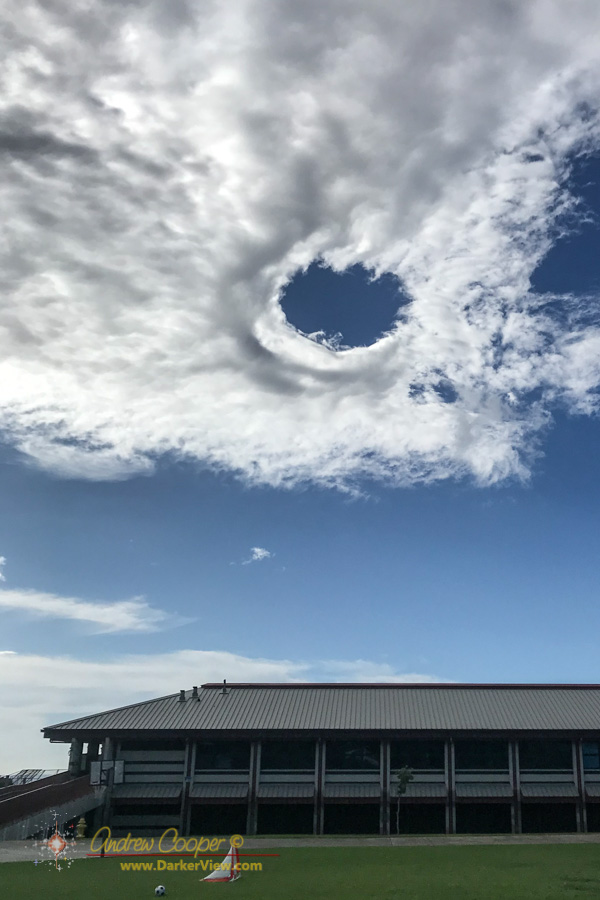We were just setting up the telescopes when I looked up and spotted it.
Waikoloa School was hosting a community picnic, a couple bands, food, performances by a karate club and a halau, plus a few telescopes provided by Keck and the West Hawaii Astronomy Club. It promised to be a fun evening.
What I spotted was a hole-punch cloud above the school. OK, that was unexpected. A high thin layer of altocumulus perforated by a neat circular hole.
The hole had a thickened edge as if something had pushed the cloud layer aside. Otherwise it was completely clear in the center and nearly perfectly circular.
Hole punch clouds are often formed when something passes through a cloud layer, such as an aircraft, disturbing and destabilizing it. This does not appear to be the case here, rather I would guess that an updraft from below pushed its way into this particular cloud from below.
The hole was short lived, fading in about 15-20 minutes as the cloud layer reformed.


